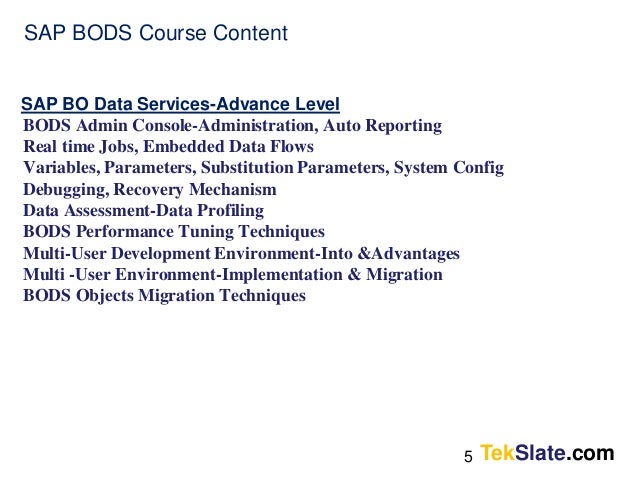What Is Key Generation In Bods
What is the use of BusinessObjects Data Services? BusinessObjects Data Services provides a graphical interface that allows you to easily create jobs that extract data from heterogeneous sources, transform that data to meet the business requirements of your organization, and load the data into a single location. Define Data Services components. Data Services includes Continue reading. Key Generation Transformation is used to generate artificial keys for new rows in a table. The transform looks up the maximum existing key value of the surrogate key column from the table and uses it as the starting value to generate new keys for new rows in the input data set. 6) Key Generation: This transform is used to generate new keys for new rows/records in a data set. When it is necessary to generate artificial keys in a table, the KeyGeneration transform looks up the maximum existing key value from a table and uses it as the starting value to generate new keys. Mar 27, 2019 SAPVITS offer SAP BODS Online Training By Industry Experts Over 8+ yrs Trainer. Also Provide FREE TRAINING DEMO For SAP BODS. Feb 24, 2014 what is the difference between row generation and key generation transform? In which scenario we need to use row generation transform and key generation transform in BODS. Note: I am using BODS 4.0 version. Feb 29, 2012 Key Generation. Although the Key Generation Transform actually does execute a SQL I put it into the Streamline category because it executes one and only one SQL at the start of the transform and this is a 'select max(key) from table'. In almost all cases this key will be the primary key column which is indexed. Dec 08, 2016 Merge Transformation is used to combine the multiple input data sets into a single output data set. It is equivalent to SQL UNION ALL statement. In order to eliminate duplicate records from output dataset basically to attain UNION operation, add a.
Vast is an Ocean,So is vast the World of Knowledge. With my diving suit packed, loaded with imaginative visions, and lots of curiosity, started diving deep into the world of BODS.Lots of work is going on. Got attracted towards the “Key_Generation” transform and was fascinated at its features.Now it was time for me to fuse and adapt myself into its world.
THE KEY_GENERATION TRANSFORM:-
https://renewhook450.weebly.com/blog/download-mac-update-109. This transform is categorized under the “Data Integrator Transforms”. This generates new keys for source data, starting from a value based on existing keys in the table we specify.
What Is Bod In Accounting

If needed to generate Artificial keys in a table, the Key_Generation transform looks up the maximum existing key value from a table and uses it as the starting value to generate new keys.
The transform expects the generated key column to be part of the input schema.
STEPS TO USE KEY GENERATION TRANSFORM:-
Scenario:- Here the target data source for which the keys is needed to be added, have certain newly added rows without a Customer_ID. This could be easily understood in the following snap:-
Our aim here is to automatically generate the keys(Customer_ID) in this case , for the newly inserted records which have no Customer_Id. Accordingly we have taken the following as our input (the modified data without Customer_ID)
INPUT DATA (to be staged in the db):-
TARGET TABLE(which contains the data initially contained in the source table before the entry of new records in the database):-
THE GENERATED DATA FLOW:-
Bod Key Products
CONTENT OF SOURCE DATA:- (containing the modified entry alone)
CONTENT OF QUERY_TRANSFORM:-
Gsm key generation and encryption process. CONTENT OF THE KEY_GENERATION TRANSFORM:-
THE CONTENTS OF THE TARGET TABLE PRIOR JOB EXECUTION:-
The JOB_EXECUTION:-
THE OUTPUT AFTER THE JOB EXECUTION:-
We can now see from the output how Keys have been generated automatically to those records which did not have the Customer_ID initially.
I explored this little process of the Key_Generation transform, and it seems a savior at times when huge amount of data have the missing entries(wrt to the keys or any sequential column fields).
Now its time to go back to the surface of waters…….